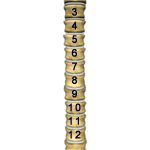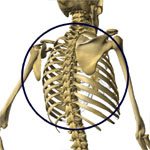The Thoracic Spine


Composed of 12 vertebrae, the Thoracic Spine is the longest part of your back. It is often referred to as the middle back and each of the vertebrae has a rib attached to it.
Nerves that exit between vertebrae in the Thoracic Spine control muscles, other surface tissue, and internal organs. Surface areas of these nerves include arms from the elbow down, hands, fingers, and muscles of the middle back, the chest, and the ribcage. Subluxations here can cause pain and numbness as well as other musculoskeletal problems.
Nerves passing through the Thoracic Spine control important parts of the sympathetic nervous system including the heart, lungs, bronchial tubes, gallbladder, liver, stomach, pancreas, spleen, adrenal glands, kidneys, and small intestines. Subluxations that affect these organs are potentially very serious. Systemic problems include asthma, some problems with the heart, bronchitis, elevated or low blood pressure, ulcers, allergies, kidney trouble, and digestive problems. Often, a subluxation in the Thoracic Spine will go undetected for a long time before being noticed or treated.



